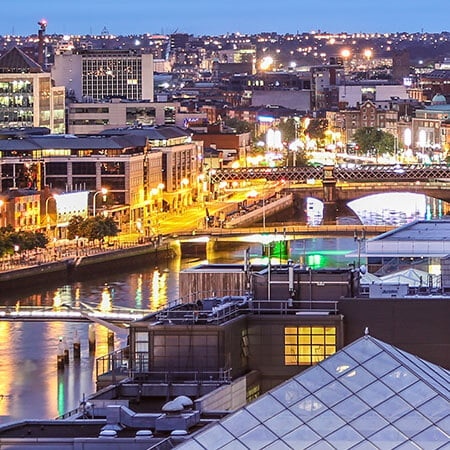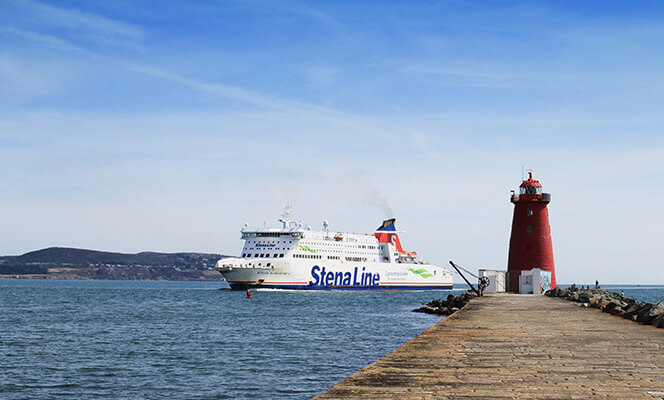
invest
Why invest in Dublin?
Exceptionally well-educated workers, four of Forbes's top Most Innovative Companies and all the vibrancy of a European capital city: Dublin is where you want to be.
Dublin.ie – https://dublin.ie/invest/why-invest-in-dublin/connectivity/
Connectivity is a defining feature of modern economies as global communities, economies and countries become closely linked.
Dublin is Ireland’s capital city and is closely connected to the rest of the island by road and rail. Its air, sea and digital links also guarantee excellent connectivity with the UK, Europe and the rest of the world. Then, in terms of global connectivity, its strong digital infrastructure keeps businesses connected to their staff and customers around the world too.
The city’s exceptional connectivity is just one of many reasons to consider investing in Dublin.
Huawei’s most recent Global Connectivity Index ranked Ireland as a frontrunner in digital connectivity. Based on ICT investment and maturity, it came 9th – just behind China and among the best countries in Europe.
Dublin benefits from one of Europe’s most advanced and competitive telecommunications infrastructures. An extensive fibre optic network provides world-class national and international connectivity. The Irish telecommunications market is fully deregulated, and a number of companies operate within it, including Eir, ESB Telecoms and Virgin Media.
A mixture of 4G and 5G mobile networks are available in Dublin. Three mobile providers operate their own networks in the market: Vodafone, Eir Mobile and Three Ireland. These providers also lease wireless telephone and data spectrum to a growing number of virtual network operators, including 48, Lycamobile, An Post Mobile, Sky Mobile, GoMo, Clear Mobile, Tesco Mobile and Virgin Media. Here’s a nationwide coverage map.
Dublin is home to Ireland’s busiest airport, which is easily accessible by road from the city centre. Dublin Airport ranks among the top 20 in Europe for both direct and hub connectivity.
43 airlines continue to connect the city to over 190 destinations in 40 countries across four continents. In the process, it handles over 30 million passengers a year.
The US Pre-Clearance facilities at Dublin and Shannon Airport in Clare are the only ones of their kind in Europe. It makes travel to the USA as stress-free and straightforward as possible.
Journey times across the Atlantic start at around 7 hours. While flights to the likes of Paris, Amsterdam, Brussels, Berlin and Luxembourg take two hours or less. Flights to British destinations are even shorter.

Dublin’s deep-water port is a modern and sophisticated facility that caters for freight, ferry and cruise traffic. Just minutes from the city centre, it is quickly and easily accessible by road and public transport.
Its main activity is freight handling and 82% of the port’s volumes are in Ro-Ro trailers or Lo-Lo containers. In 2023, the port saw positive growth indicators in a number of areas, with new trade vehicle imports rising by 40.3% to 67,000 units, bulk liquid petroleum imports at a record high, and increases in both ferry passenger and tourist vehicle numbers.
To accommodate future growth, Dublin Port Company is actively implementing its development plan, Masterplan 2040, which sets out to optimise the port for merchandise trade purposes. One key aim within this plan will see the port’s capacity enhanced to 77 million gross tonnes by 2040.
The implementation of the government’s ‘Transport 21’ strategy saw a rapid improvement in Ireland’s road and motorway network. This strengthened national and international connectivity for motorists and freight traffic.
Today, Dublin’s road infrastructure continues to see significant investment under the National Development Plan, which aims to develop sustainable transport infrastructure and enhance connectivity for businesses and commuters across the region.
Irish Rail,Ireland’s rail network operator, provides a mixture of Intermodal and Bulk Freight trains across 2,400km of track for various customers.
With record investment in the network under the National Development Plan, Irish Rail is undertaking a range of projects to develop its fleet, services and infrastructure. This has included the introduction of an improved zonal policy and a recent commitment to deliver up to 600 electric vehicles across its network.

Exceptionally well-educated workers, four of Forbes's top Most Innovative Companies and all the vibrancy of a European capital city: Dublin is where you want to be.

Ireland’s capital has a thriving, vibrant and diverse business ecosystem which always has room for entrepreneurial business people.

Since the 1950s, Ireland has pursued a vision of ‘industrialisation by invitation’. Today, it benefits hugely from the welcoming business environment it has created. Throughout the years, FDI companies from the US, Europe and further afield have all invested in Ireland. Why FDI companies come to Ireland Ireland’s strong legal and regulatory landscape contributes to Dublin’s reputation as an attractive and stable place to do business. EU and Eurozone membership, a young, well-educated, English-speaking